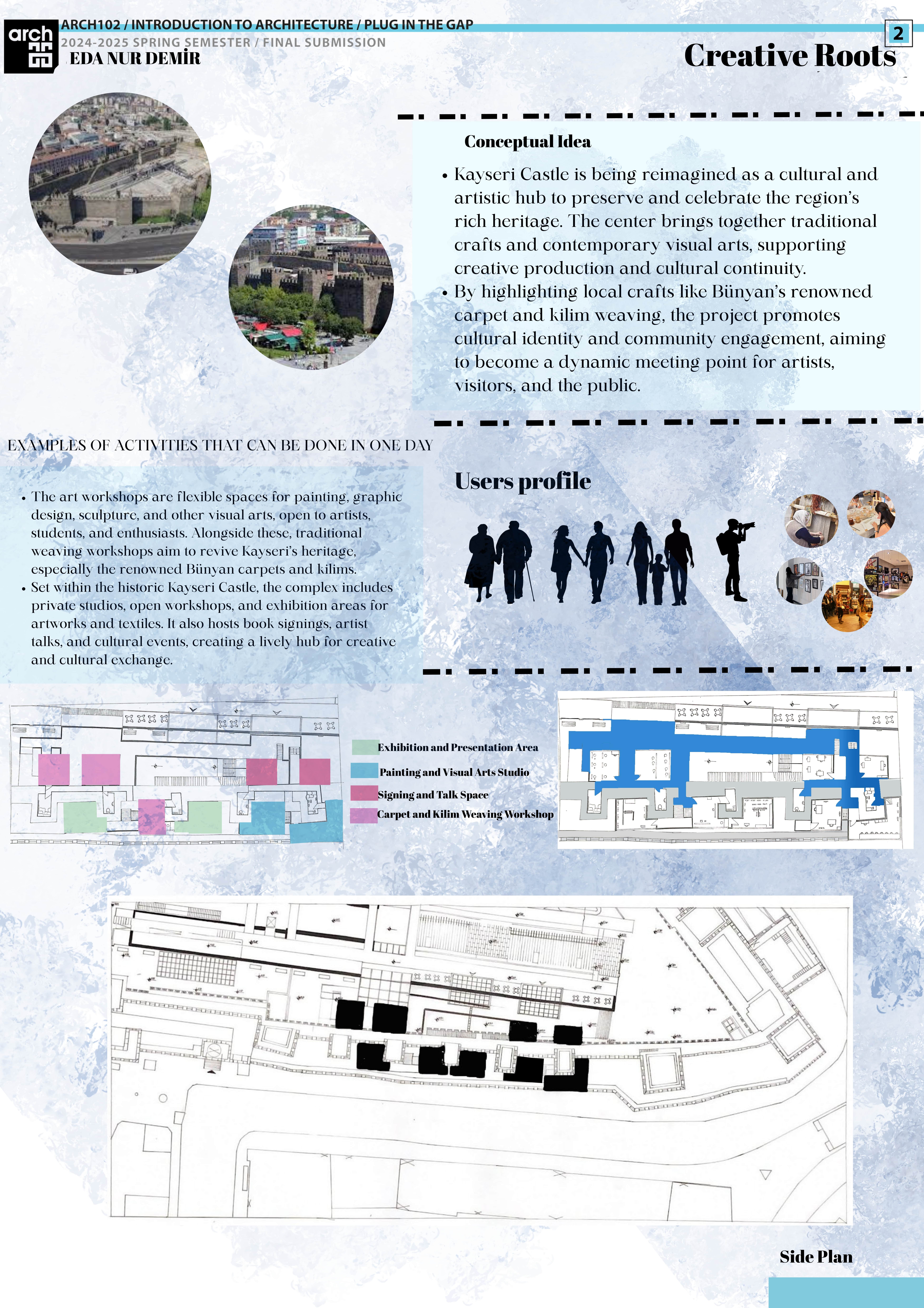CREATIVE ROOTS / Eda Nur Demir
This project brings together Kayseri’s rich tradition of textile weaving with contemporary art practices through
a holistic architectural approach that aims to establish a cultural bridge between the past and the future. The
spaces are not merely physical areas for production, but living cultural hubs where knowledge is transferred,
experiences are shared, and social interaction takes place.
At the heart of the design are traditional craft workshops that are thoughtfully integrated into the historical
fabric of Kayseri Castle. The renowned handwoven carpet and kilim tradition of Bünyan district is revived and
preserved within these spaces. While master artisans work in dedicated studios, semi-open workshops allow
visitors to observe the production process firsthand, making the craft both transparent and accessible. In this
way, production continues while cultural knowledge is passed on to younger generations.
The complex also features contemporary art studios designed with flexibility and adaptability in mind. Artists
and students working in disciplines such as painting, graphic design, and sculpture can engage in both
individual and collaborative work within these multi-functional areas. With high ceilings, abundant natural light,
and open-plan structures, the spaces encourage creativity and productivity. Modular partition systems enable
the studios to be reconfigured based on changing needs. These same spaces can also function as exhibition
areas or host other events, allowing for versatile use.
A permeable circulation system has been developed between interior and exterior spaces, enabling visitors to
witness the artistic process in action. Visual and spatial connections between workshops and galleries allow art
to be experienced not only as a final product but as an evolving process. Courtyards, semi-shaded walkways,
and green resting areas strengthen the bond between the users and the space. Circulation is designed to be
intuitive and open to exploration rather than strictly guided.
At the center of the complex lies a large open area that functions as a social gathering space, hosting artist talks,
book signings, cultural events, and spontaneous encounters. Designed as a vibrant community hub, it welcomes a
wide range of users—elders, families, students, and tourists alike. With seating areas, temporary stage
arrangements, and exhibition platforms, this central square forms the heart of the entire complex.
Natural and local materials are prioritized in the material palette. Traditional stone walls, brick surfaces, and
wooden lattice systems evoke a warm and timeless aesthetic while reinforcing the regional identity. Perforated
façade elements inspired by weaving patterns create visual rhythm and enrich the spatial atmosphere with
dynamic light and shadow play. These details reinterpret traditional symbols within a contemporary
architectural language.
This architectural approach aims to create more than just a building—it proposes a living, evolving cultural
space. By integrating traditional crafts with contemporary modes of artistic expression, it offers a layered and
meaningful experience. It is a place of production, sharing, and transmission that protects Kayseri’s cultural
identity while connecting it to future generations.




